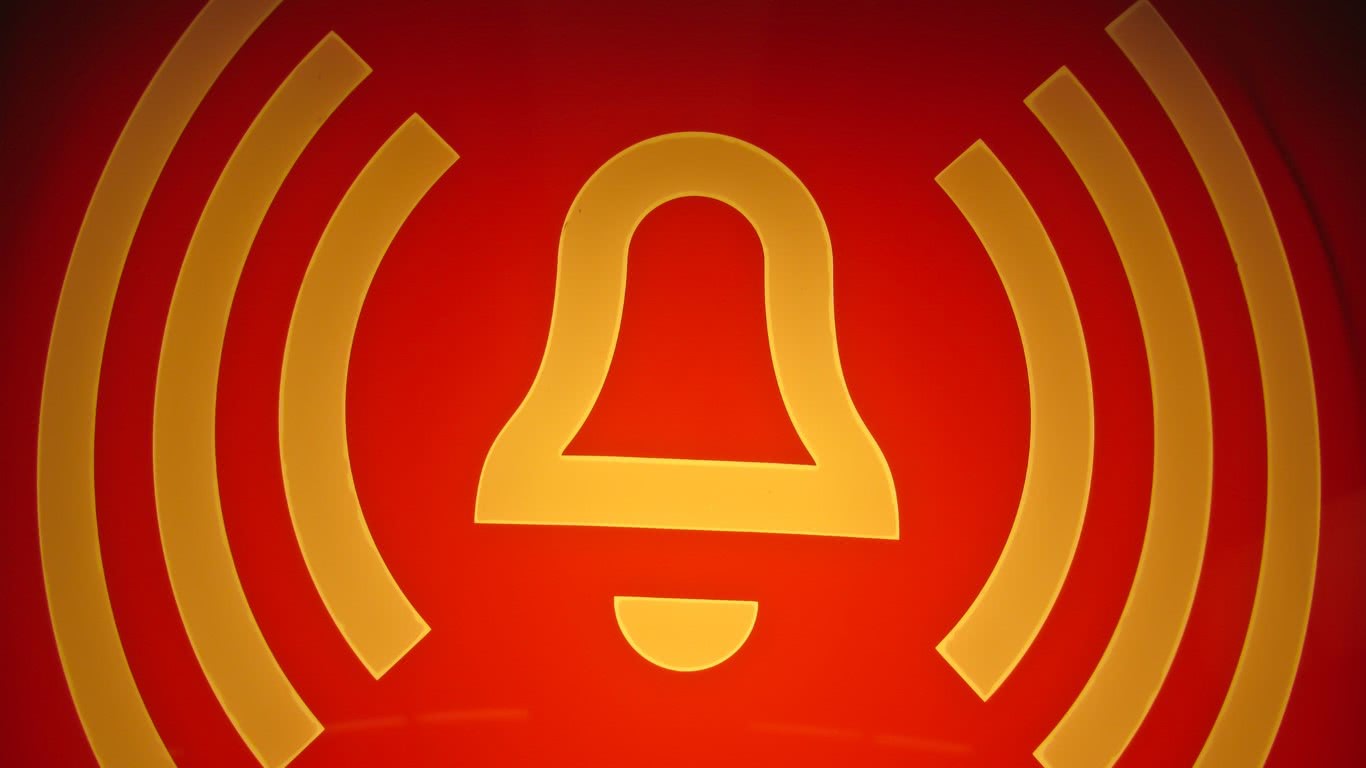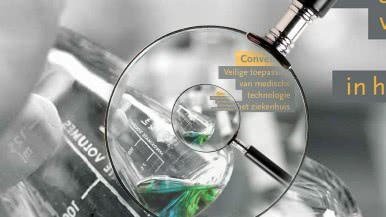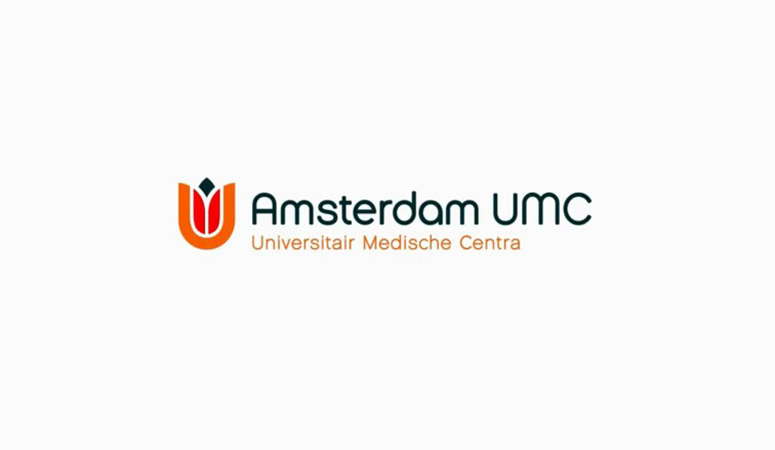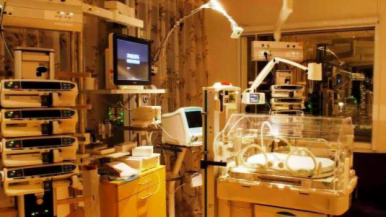Paragrafen
Response to a trend
In the Intensive Care Unit (ICU), patients are critically ill and require support and monitoring from many (life supporting) devices, leading to a lot of alarms and potentially critical situations if alarms are missed (1-3). The Joint commission announced 2014 the year focused on alarm safety (4,5). In 2011, the Association for the Advancement of Medical Instrumentation (AAMI) presented the results of a roundtable discussion on alarm safety (6). The motivation for the discussion was that alarms in clinical practice were missed because of the desensitization of nurses to alarms due to so-called alarm fatigue. The AAMI addressed the topic of alarm fatigue but also the problems with improving alarm relevance and improving the integration between devices, noting that new developments for improvement are hindered by legislation, e.g. it is difficult to get FDA clearance for smarter algorithms (6).
In the last years, a trend is observed in Intensive Care Units, Coronary Care Units and lately also in Neonatal Intensive Care Units (NICU) towards single room intensive care, with a particular focus on silence in these single rooms (7-12). Noise in Intensive Care Units is considered to have negative effects on the recovery and development of the patients and is associated with sleep disturbances and delirium (13-15)(16). Single room care can reduce the noise, it gives privacy for the patient and is for sure a better environment to prevent infections (10), however this situation poses challenges for the alarm management. In single room care, the caregiver is not always in the proximity of the alarm generating machine.
To discuss the possibilities but also the limitations of these trends, an initiative from the Dutch “Joint association of medical technology” has resulted in a Taskforce on Safe and Silent Alarming. Three brainstorm sessions have been organized. Not only representatives of the main medical technology societies in the Netherlands were involved, but also the representatives of a large group of manufactures and vendors (For a list of vendors/manufactures who collaborated, contact Leo Groenendaal (l.groenendaal@erasmusmc.nl)). One of the sessions was joined by a representative of the Dutch Health Authority and by an expert involved in the developments of standards. At a congress for users, both physicians and nurses have given their opinion on safe and silent alarming. In addition, the medical staff of our hospitals have contributed to the risk assessment.
Purpose of the Taskforce on Safe and Silent Alarming
The purpose of the Taskforce on Safe and Silent Alarming is to address the main problems encountered upon implementation of medical alarm management systems in clinical practice, in particular in a single room intensive care situation. During the brainstorm sessions, the Taskforce realized that the challenges were still too high to be able to develop a directive. Therefore, this paper will give an advice on safe implementation of alarm management in clinical practice, and address the issues of silent alarming, i.e. without alarms sounding in the room of the patient. We will present the main topics and challenges addressed in the brainstorm sessions and they will be discussed in the following sections. The summary of these challenges are defined as a set of requirements, meantas a cry for help to the manufacturers and norm bodies, in order to develop safer systems that allow for more silent ICUs. One of the main goals is to enforce standardization in the implementation of medical alarm management systems in hospitals. This requires cooperation between vendors, to help hospitals answering in a safe way to this trend in society.
Alarms and alarm management systems
An alarm is implemented in medical devices to alert caregiver on a possibly critical situation of the patient. Nowadays, devices are used in a network, usually connected to a central monitor, sometimes to other monitors (this is called inter-bed communication) or to handheld devices via a distribution system. We call this the alarm management system, as illustrated in Figure 1. In the IEC 60601-1-8 only a difference is defined between alarm system (part of a medical electrical system that detects the alarm condition, usually directly in the device) and distributed alarm (alarm system that involves more than one item of equipment of a “medical electrical system” (ME system)). However, most vendors and users talk about the primary and the secondary alarm chain. The primary alarm chain refers to the patient monitor, the central monitor and the connection to the other patient monitors (inter-bed communication). In this chain, an alarm is guaranteed to be visualized within a specified brief period of time at all monitors in this chain (including the central monitor). If components in this alarm chain malfunction, a notification is given.
The term secondary system is usually used to point to a distributing system, where the alarm is sent over the hospital infrastructure (e.g. via wired network, wireless network/private gsm) to other more distant components, like a handheld. The timing accuracy of the secondary alarm chain is not at all times guaranteed and also the robustness of the system is not subject to the very strict specifications like in primary alarming.
Standards, norms and legislation
The main legislation for medical devices is defined in the Medical Devices Directive (MDD). In addition, there are standards meant for manufacturers, as a guideline for designing systems. This will ensure that the presentation to end-users will be standardized for some main safety aspects. Several important standards with respect to alarm management systems are the IEC 60601 series, including the 60601-1-8 addressing alarms and distributing systems. In addition, the ISO 80001 on the application of risk management for IT-networks incorporating medical devices has a substandard 80001-2-5 on alarms in networks (17). In addition, an IHE group focuses on alarms, the IHE-PCD specification which defines a “standard” protocol to communicate clinical alarms from patient care devices to an alarm management system (18).
All medical alarm management systems in Europe need to have a CE Medical Class certificate, for discussion with respect to this classification, we refer to the White Paper written by Axon Lawyers for IQ Messenger (19). They state that either the medical alarm message server (or its software) or the complete medical alarm chain needs to be certified, since the alarm handling by the message server provides functionality as defined by the MDD – meaning that it interprets incoming communication before it distributes the alarm (19).
The Dutch Taskforce observes that the legislation with respect to life support machines is strict, based on the assumption that alarms require immediate action, expecting a caregiver to be in the direct neighborhood of the patient. From that point of view, generating alarms with sound is appropriate. However, in clinical practice nowadays in single room care, with privacy for patient and family, caregivers are nearby but not in the room itself. The alerting sound should be at the position of the caregiver and not of the patient, requiring new designs but also new standards that are adjusted to these trends.
One of the main problems in connecting medical systems is that not all devices speak a vendor-independent language, thus complicating connecting different systems. Though there are standards, manufacturers still often use vendor-specific communications protocols and the connection is considered to be the hospitals responsibility. Like in the medical imaging field, a better compliance with IHE-like protocols is needed.
Risks of alarm systems
One of the major risks of using alarms is that it may lead to alarm fatigue due to the large number of false alarms caused by the implementation according to the better safe than sorry methodology (20-22). This will be discussed in more detail in the next paragraph. Other risks include the failures of alarm distributing systems, unclear definitions in hospitals of how to choose/set alarm limits, and unclear alarm handling protocols without clear definition of responsibilities (23).
The Dutch Taskforce considers a critical assessment of medical alarm management necessary upon implementation of new patient monitoring systems in hospitals, in particular if distributed medical alarm systems are used (as described in IEC-60601-1-8 (24)). This can be achieved via a risk assessment. The ISO 80001-2-5 gives direction for manufactures but also for users on the aspects what to include in the risk assessment (17). Figure 1 displays primary and distributed alarm system. In the risk assessment, not only the technical aspects need to be addressed, but also the process of alarm handling by the users. It is important to define the responsibility of the users but also the responsibility of the manufacturer when installing such a system in a hospital. The results of the brainstorms on these two topics are shown below:
1. what is the responsibility of the manufacturer?
- Set a clear definition of intended use.
- Make a safe and well-functioning device for the intended use, evaluated with a risk-assessment
- Provide clear instructions on how to use the device safely, within intended use.
- Comply with standards
- Perform a post-market surveillance and notify users if errors in device occur
- Describe the integration possibilities to other systems: interoperability might not be a part of the standard but it is considered the responsibility of the manufacturer to inform the users.
Quick win: Add a summary of risks of device use in red and yellow bullets in the instructions for use. This could then be used for a local risk analysis.
2. what is the responsibility of the hospital?
- Adequate and safe implementation of alarm systems in close collaboration with vendor, according to intended use of that system.
- Provide an adequate infrastructure that complies with the requirements specified by the vendor.
- Inform users on intended use and take care that non-intended use does not occur.
- Perform risk analysis before first use, evaluating the complete alarm handling process as used in clinical practice.
- Ensure that all users are well trained in adequate handling of alarms.
- Inform vendor if inexplicable errors or unsafe situations occur.
- Be careful only to install alarm systems with a CE Medical Class.
Quick win: Users need to be informed of the limitations of the alarm management system and of their own responsibility. Be aware that emergency protocols are in place if the system fails.
A multi-disciplinary user group (consisting of nurses, physicians, technicians/engineers, supported by advisers from the manufacturer of the systems) is needed to make the right choices about alarm limits, alarm urgency and alarm distribution. In particular the protocol used by the nurses and physicians with respect to adjusting alarm limits for individual patients needs to be discussed, since there is a risk in adjusting alarm limits without informing co-workers. It might be possible to standardize the basic set of alarm limits for typical groups of patients, however the local choices for the alarm limits and alarm handling methods are influenced by the local situation and the team structure.
The process of alarm handling needs special attention: teams need to be trained in how to handle an alarm: who is going to react to the alarm, what happens if the first responsible nurse is not available? Some teams always have a nurse looking at the central monitor, whereas other teams use the “buddy method” (9,25)in which the first responsible nurse always works with a buddy who will take care of the patient if the first responsible nurse is not available. Other methods are to use the whole team as a backup if the first responsible nurse is not available to react to an alarm. In particular if alarm distributing systems are used, the accepting or rejecting of an alarm in such a system, and the process of where to distribute the alarm next, needs to be determined. The “if - then – else” scenarios need to be analyzed to detect risks.
It is clear from the previous section that upon implementation of patient monitoring systems using an alarm management system, a local risk analysis is very important to find the main risks in the system and to determine measures to reduce risks (see checklist below). Manufacturers perform a risk analysis before bringing a product into the market, evaluating device safety based on intended use (in international setting). This information is usually not freely available, but by including the vendor/manufacturer in the local hospital risk assessment this information can be included in the local risk assessment performed by the hospital. A local risk analysis improves the safety of the implementation of alarm management systems (9) and improves the “safety thinking” of the users, however note that a risk analysis is never a complete guarantee for safe implementation.
3. Overview checklist for implementation of safe alarm systems for hospital
- Check the certificate of the system and the separate components with respect to the Medical Devices Directive (MDD). Hospitals are not allowed to install medical alarm management that has no CE Medical Class. In particular when several systems are connected, a good description of responsibilities for this connection is necessary.
- Acquire a system according to the procurement procedure in the hospital, conform the “Covenant on Safe Application of Medical Technology”.
- According to the standards 80.001, the hospital is responsible of the risk assessment. The taskforce advices to perform the risk assessment in the acquisition phase. If “in house” knowledge on risk assessment is insufficient, this service should be acquired.
- The team for risk assessment in the hospital should contain the users group (nurse, physician) but also experts from medical technology/clinical physics, ICT experts. Consider also to include the manufacturer/vendor in order to have the input of the manufacturers risk assessment.
- Determine and describe the complete process with respect to alarms and alarm handling, both by users and by the system. Standardizing the procedures of using the system is important.
- Define the main failures modes for each process step, the accompanying risks and the measure to reduce them. It would help if one general template as a basis could be used.
- One of the most important steps is to define the alarm limits used in the unit, in the multidisciplinary user group. If alarm limits are chosen too wide, too many alarms occur. If alarms limits are chosen too narrow, alarms might be missed.
- Before release for use, all users of the system should be trained in the use of the system and the limitations of the system and emergency protocols.
- Before release for use, acceptance testing is performed to check all components and possible handling of alarms in the system. This means end-to-end testing of the complete system, try to simulate a busy day! During these tests it is important also to measure typical time delays in the system, simulate first fault conditions and check if alarms occur when parts of the technical chain is failing.
- Define the maintenance of the system and the responsibilities for reacting to technical failures, since for this type of equipment usually the medical technology department, but also the ICT department and the vendor have an important role.
Quick win: involve manufacturer/vendor in the risk analysis, e.g. by planning with manufacturer a risk assessment workshop within the tender.
This checklist is the result of the brainstorm session, using input from manufactures, from users in hospitals familiar with risk analysis in alarm management in hospitals and of course input from ISO 80001-2-5 is used (17).
Alarm fatigue
Alarm fatigue is recognized by the experts as the largest risk with respect to clinical alarm management. According to users in our hospitals, safe alarming is a topic discussed in the teams, not only since adequate alarms will increase patient safety by a more adequate reaction to critical situations, but also because the noise of alarms induces stress in both patient and the caregiver (13). The large number of false alarms is known to inhibit the response of the caregivers (2,22). To improve alarm safety, only alarms that are relevant to changes in the patient’s condition should be used to alert the caregiver.
Though the users recognize the risk of alarm fatigue, they don’t know where to start to decrease it: there is no clear guideline on which alarm limits to use: how do we know which alarms are relevant and which ones are not? Focusing on making alarms more specific and more clinically relevant should be one of the first topics of investigation and is not only applicable to alarm management in distributing alarm systems but is applicable to all alarms in critical care units. Most hospitals even have no clue about the number of alarms in their units, except that it is assumed to be “a lot” or “(too) many”. Only recently the first commercial alarm dashboards have become available, displaying the number of alarms generated per unit or per patient. Giving insight into numbers of alarms, sources of alarms and also the timing of alarm handling would be a good start to investigate the possibilities for improvement (9).
What we need are clinically relevant alarms. This can be achieved by using for example smart algorithms (26,27)to filter the irrelevant alarms out of the alarm chain, or by combining alarms from various sensors into one alarm related to a clinically significant deterioration. This requires methods to determine whether alarms were relevant. Preferably critical situations are detected in an earlier phase before the situation becomes really critical. This still requires a lot of research.
The need for silent ICU’s
The noise level in intensive care units is high, ranging from 50 to 75 dBA, with peak level up to 103 dBA (14,16,28). This is much higher than the maximum background noise level defined by the World Health Organization (WHO) of 30 dBA with peaks not higher than 40 dB during night to prevent from sleep disturbance (29). Speaking and medical equipment are causing the peak sound levels exceeding 80 dBa (28)(30)and the sound of monitor alarms is considered one of the main disturbing noise sources (31).
Intensive care units could first be made more silent by adequate design of the environment (10,32). A first step to reduce alarm sound levels is to reduce the number of false alarms. Since less than 20% of all alarms are considered clinically relevant (2,33,34), a significant reduction of noise is then achievable. A second step is to silence medical alarms in the rooms: a general observation is that if no caregiver is available in the patient room to react to the alarm, why do we bother patients with alarms they cannot attend themselves? A passenger in an airplane does not need to hear the alarms from the cockpit. In general, the clinical need for silent ICU’s is recognized by the industry. However, several critical remarks can be given:
- Nurses are tuned to alarms. To take away sound as an alert, the nurse might not be triggered sufficiently. This requires a new way of working.
- If alarms in the rooms are silenced, the requirements for the central monitoring system and potentially the alarm distributing systems become even higher.
- There is a major legal aspect to this topic, as already addressed by the AAMI (6)and also discussed in this Taskforce: manufactures are not allowed to change the alarm sounds since the standards prescribe the alarm sounds (24). Even if new standards are developed which will allow for setting sound levels of alarms to zero, it takes years to implement this on devices before available on the market.
In conclusion, the road to the silent ICU without medical equipment sounding alarms is still considered long. However, hospitals require further developments in this direction and we ask the manufacturers but also the norm committees to further investigate the possibilities, e.g. technically but also with respect to norms.
A better collaboration between manufacturer and user is needed, to create a market-pull instead of market-push in order to really develop what users need in their clinical practice. For manufacturers, the pre-market surveillance is becoming more important in order to develop together with the end-users before bringing the device into the market, in order to make the product suit better to the clinical needs.
Reaction of the health authority representative
Device safety of all equipment legally to be classified as a medical device (including clinical monitoring systems with alarm functionality) should be assured by the manufacturer and includes fulfillment on compliance with MDD by notified body, e.g. on intended use & output of the types of alarms.
Hospital safety should be investigated by a local risk assessment. The Dutch health authority (IGZ) warns to be careful with distributed systems, when subsystems are incorporated which are not classified as a medical device (like telecom systems, regular IT-networks or nurse calling systems). If a subsystem is not a medical device it complies to less safe standards and is not subject to the Medical Device Directive. The manufacturer involved is not subject to the supervision of the IGZ. In that case supervision of the IGZ is limited to the health care institution and/or individual health care provider, which both have to comply with organizing and delivering adequate care. Requirements for that are in the Netherlands laid down in the ‘Kwaliteitswet zorginstellingen’ and ‘Wet BIG.’
Post market surveillance by manufacturers is a crucial element in the European regulatory system for medical devices to control the safety of products put on the market. Manufacturers should pro-actively evaluate the use of their devices and use this information in the continuous process of verifying and possibly adapting the initial risk assessment. In case of clinical incidents relating to their products they have to inform the competent authority involved.
The role of the health authority is to supervise the compliance of both manufacturers (product safety) as well as caregivers (adequate care) to abiding laws. Starting this year the IGZ has an active policy on the supervision on software which has to be classified as a medical device (for more information click here).
Set of requirements: Technical challenges and possible solutions
In the brainstorm sessions, several challenges have been defined. The summary of these challenges are defined as a set of requirements, meantas a cry for help to the manufacturers and norm bodies, in order to develop safer systems that allow for more silent ICUs. We can outline the main requirements to the field as:
- All medical alarm management systems in Europe need to have a CE Medical Class certificate. Either the medical alarm message server (or its software) or the complete medical alarm chain needs to be certified. If only the alarm server is certified, additional requirements are defined by the vendor to the other parts of the chain (in particular the hospital network). We as the vendors/manufacturers to be clear about the parts (or chains) that are certified and about the additional requirements to other components.
- Hospitals require a safe alarm management system, with a reduction in false alarms, since the latter results in alarm fatigue that is considered the highest risk in clinical alarm management. Developments focusing on improving the clinical relevance of alarms are necessary and needs to get high priority. This aspect needs to be addressed by research communities and by manufactures (e.g. by making smarter algorithms). A small step forward would be to use alarm dashboards to help the unit to investigate the alarm pressure and to reduce it. This has recently technically become available but is not yet frequently used in hospitals.
- A common standard or “best practices guidance” is needed quickly on how to implement safe alarm management. Manufacturers point out that they are forced to treat each new customer engagement as a complete “fresh-start” solution, relying on that site’s clinical resources to re-invent appropriate alarm management workflow. By sharing information, but also by accepting other hospitals best practices, the implementation process could be facilitated and hospitals can share information on the risks in the system, in order to reduce them before implementation.
- Medical alarm systems should have a high availability. The redundancy of these critical systems concerning IT network and hardware components should be adequately addressed. Chain /network monitoring is to be implemented to guarantee that the system is functioning. The system should alarm if components within the system are failing. This is technically already feasible, however it requires overview of the different components, usually of different vendors, which complicates the implementation. Upon installation of an alarm system, the complete alarm chain needs to be tested. The responsibility of each vendor in this alarm chain should be defined, in particular in case different systems are integrated.
- Medical alarm systems should use standards and use a vendor-independent language. Hospitals ask the manufacturers to follow the standards and to work together in connecting systems. In general, hospitals experience problems between vendors / manufacturers to take responsibility for the connection and the handshake instead of working together. The adoption of the IHE-PCD specification without vendor-specific “improvisations” to the protocol is necessary.
- For the development of standards on alarm management, the requirements and developments in clinical practice should be included. Single room intensive care asks for a new approach of alarm management and these developments should not be hindered by old-fashioned standards limiting the vendors/manufacturers in their progression.
In conclusion, the brainstorm has led to a practical advice for hospitals on how to proceed towards safer alarm management. The possibilities for silent ICU’s are explored and topics are outlined that need to be addressed before this path can be followed. The next step is for the manufacturers: to develop methodologies for safer (and certified, affordable) alarm management in distributed systems. At the same time, hospitals should investigate local alarm pressure and develop methodologies to improve alarm safety and reduce alarm fatigue.
NEDERLANDSE SAMENVATTING / SUMMARY IN DUTCH
Medische alarmeringssystemen worden gebruikt om de zorgverlener erop te attenderen dat een patiënt hulp nodig heeft. De patiënt kan de zorgverlener bellen (verpleegkundig oproep systeem, VOS), maar een medisch apparaat kan bijvoorbeeld ook automatisch een alarm naar de zorgverlener sturen (Medisch oproep systeem, MOS of medisch alarmeringssysteem, MA), via een ICT-keten. Dit kunnen bijvoorbeeld alarmen zijn van een bewakingsmonitor. Op afdelingen met intensieve-zorg worden ernstig zieke patiënten behandeld en gemonitord, wat leidt tot veel alarmen en potentieel kritieke situaties als alarmen worden gemist.
Internationaal melden zowel ECRI, JCI als AAMI dat veiligheid van alarmering een belangrijk onderwerp is. Niet alleen de veiligheid van de techniek zelf maar ook het mogelijk optreden van alarmmoeheid worden als belangrijke aandachtspunten benoemd.
In Nederland is vanuit de Koepel Medische Technologie een “werkgroep Veilige en Stille Alarmering” samengesteld, die samen met een vertegenwoordiging van leveranciers van alarmeringssysteem en patiëntbewakingssystemen een aantal bijeenkomsten heeft georganiseerd om de grootste knelpunten in medische alarmeringssystemen zoals in Nederland gebruikt (gaan) worden te benoemen. Tijdens de brainstormsessies realiseerde de werkgroep zich dat het te vroeg is om een landelijke ??richtlijn te ontwikkelen, daarom zal in dit document een advies gegeven worden aan ziekenhuizen hoe op een veilige wijze een alarm management systeem geïmplementeerd kan worden en waarmee rekening gehouden dient te worden. Ook aan de juridische aspecten wordt aandacht geschonken.
Het document is geschreven in het Engels omdat de leveranciers die deelgenomen hebben aan de brainstormsessies nadrukkelijk aangegeven hebben deze informatie inclusief verzoeken voor verdere verbetering te willen delen met hun Research&Development afdelingen, die veelal niet Nederlandstalig zijn.
[1] Chambrin MC. Alarms in the intensive care unit: how can the number of false alarms be reduced? Crit Care 2001 Aug;5(4):184-188.
[2] Siebig S, Kuhls S, Imhoff M, Gather U, Scholmerich J, Wrede CE. Intensive care unit alarms--how many do we need? Crit Care Med 2010 Feb;38(2):451-456.
[3] Graham KC, Cvach M. Monitor alarm fatigue: standardizing use of physiological monitors and decreasing nuisance alarms. Am J Crit Care 2010 Jan;19(1):28-34; quiz 35.
[4] Joint commission releases sentinel event alert on alarm hazards. Health Devices 2013 Jun;42(6):200.
[5] Joint Commission on Accreditation of Healthcare Organizations. The Joint Commission announces 2014 National Patient Safety Goal. Jt Comm Perspect 2013 Jul;33(7):1, 3-4.
[6] A roundtable discussion alarm safety: a collaborative effort. Biomed Instrum Technol 2011 Spring;Suppl:8-9, 11-5.
[7] Ortenstrand A. The role of single-patient neonatal intensive care unit rooms for preterm infants. Acta Paediatr 2014 May;103(5):462-463.
[8] Ortenstrand A, Westrup B, Brostrom EB, Sarman I, Akerstrom S, Brune T, et al. The Stockholm Neonatal Family Centered Care Study: effects on length of stay and infant morbidity. Pediatrics 2010 Feb;125(2):e278-85.
[9] van Pul C, Mortel HV, Bogaart JV, Mohns T, Andriessen P. Safe patient monitoring is challenging but still feasible in a neonatal intensive care unit with single family rooms. Acta Paediatr 2015 Jan 25.
[10] Halpern NA. Innovative designs for the smart ICU: Part 2: The ICU. Chest 2014 Mar 1;145(3):646-658.
[11] Halpern NA. Innovative designs for the smart ICU: part 1: from initial thoughts to occupancy. Chest 2014 Feb;145(2):399-403.
[12] Halpern NA. Innovative designs for the smart ICU: Part 3: Advanced ICU informatics. Chest 2014 Apr;145(4):903-912.
[13] Choiniere DB. The effects of hospital noise. Nurs Adm Q 2010 Oct-Dec;34(4):327-333.
[14] Konkani A, Oakley B. Noise in hospital intensive care units--a critical review of a critical topic. J Crit Care 2012 Oct;27(5):522.e1-522.e9.
[15] Xie H, Kang J, Mills GH. Clinical review: The impact of noise on patients' sleep and the effectiveness of noise reduction strategies in intensive care units. Crit Care 2009;13(2):208.
[16] Patel J, Baldwin J, Bunting P, Laha S. The effect of a multicomponent multidisciplinary bundle of interventions on sleep and delirium in medical and surgical intensive care patients. Anaesthesia 2014 Jun;69(6):540-549.
[17] International Electrical Commission. Application of risk management for IT-networks incorporating medical devices - Part 2-5: Application Guidance - Guidance on distributed alarm systems. 80001-1-5 2013.
[18] Integrating the Healthcare Enterprise (IHE). http://www.ihe.net/uploadedFiles/Documents/PCD/IHE_PCD_TF_Vol1.pdf.
[19] Axon Lawyers for IQ Messenger. www.iqmessenger.com/white paper. 2015;
[20] Chambrin MC, Ravaux P, Calvelo-Aros D, Jaborska A, Chopin C, Boniface B. Multicentric study of monitoring alarms in the adult intensive care unit (ICU): a descriptive analysis. Intensive Care Med 1999 Dec;25(12):1360-1366.
[21] Edworthy J. Medical audible alarms: a review. J Am Med Inform Assoc 2013 May 1;20(3):584-589.
[22] Edworthy J, Hellier E. Alarms and human behaviour: implications for medical alarms. Br J Anaesth 2006 Jul;97(1):12-17.
[23] Keller JP,Jr. Clinical alarm hazards: a "top ten" health technology safety concern. J Electrocardiol 2012 Nov-Dec;45(6):588-591.
[24] International Standard IEC 60601.
[25] Medical Electrical Equipment— Parts 1–8: general requirements for safety—collateral standard. General requirements, tests and guidance for alarm systems in medical electrical equipment and medical electrical systems. Geneva: International Electrotechnical Commission, 2005;60601-1-8.
[26] Pul C, Dijkman W, Mortel H, Bogaart J, Mohns T, Andriessen P. Alarm Management in an ICU Environment. Smart Healthcare Worskhop, AAMI'2014 2014.
[27] Borowski M, Siebig S, Wrede C, Imhoff M. Reducing false alarms of intensive care online-monitoring systems: an evaluation of two signal extraction algorithms. Comput Math Methods Med 2011;2011:143480.
[28] Borowski M, Gorges M, Fried R, Such O, Wrede C, Imhoff M. Medical device alarms. Biomed Tech (Berl) 2011 Apr;56(2):73-83.
[29] Konkani A, Oakley B, Penprase B. Reducing hospital ICU noise: a behavior-based approach. J Healthc Eng 2014;5(2):229-246.
[30] Lindvall T, Schwela D, Berglund B. Guidelines for community noise. Geneva: World Health Organization; 1999.
[31] Elliott RM, McKinley SM, Eager D. A pilot study of sound levels in an Australian adult general intensive care unit. Noise Health 2010 Jan-Mar;12(46):26-36.
[32] Akansel N, Kaymakci S. Effects of intensive care unit noise on patients: a study on coronary artery bypass graft surgery patients. J Clin Nurs 2008 Jun;17(12):1581-1590.
[33] Jongerden IP, Slooter AJ, Peelen LM, Wessels H, Ram CM, Kesecioglu J, et al. Effect of intensive care environment on family and patient satisfaction: a before-after study. Intensive Care Med 2013 Sep;39(9):1626-1634.
[34] Siebig S, Kuhls S, Imhoff M, Langgartner J, Reng M, Scholmerich J, et al. Collection of annotated data in a clinical validation study for alarm algorithms in intensive care--a methodologic framework. J Crit Care 2010 Mar;25(1):128-135.
[35] Gorges M, Markewitz BA, Westenskow DR. Improving alarm performance in the medical intensive care unit using delays and clinical context. Anesth Analg 2009 May;108(5):1546-1552.















